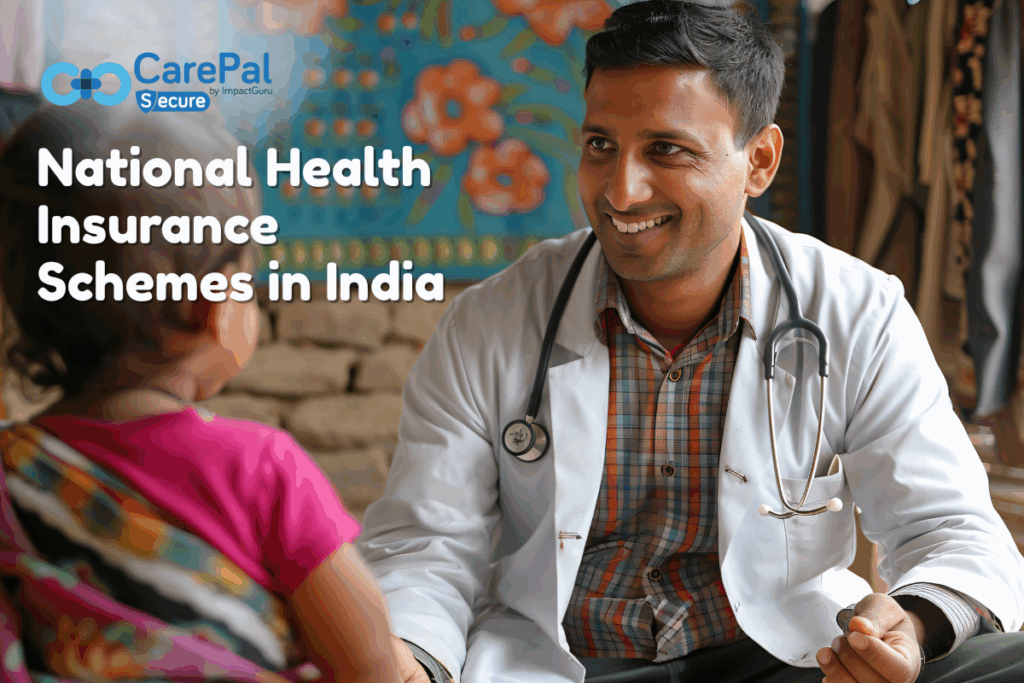Government Health Insurance Schemes in India: Updated Info for Middle-Class Families (2025)

Over the past decade or so, government health schemes have really changed things in India’s healthcare scene. While India still ranks pretty high when it comes to out-of-pocket expenses during health emergencies, these schemes have helped reduce a lot of the burden. Earlier, most government health insurance plans were mostly meant for people from lower-income backgrounds. But now, thanks to new updates and reforms, a lot of benefits are now available for middle-class folks too — especially senior citizens and salaried people. In this blog, let’s break down some of the main government schemes and what’s new in them, along with eligibility and how they could help your family.
Central Government Health Insurance Schemes
1. Ayushman Bharat – PM-JAY (Pradhan Mantri Jan Arogya Yojana)
This one launched back in 2018 and is still the largest public-funded health insurance scheme in the world. It offers ₹5 lakh per family, per year, for secondary and tertiary care. Initially, it was only for the bottom 40% of households based on SECC data.
Latest Updates (2024-25):
- In Sept 2024, coverage was expanded to all citizens who are 70 and above, no matter what their income is — which helps more than 6 crore elderly folks.
- The Health Benefits Package 2024 now has 1,650+ treatments (was 1,400 earlier).
- Over 28,000 hospitals now accept PM-JAY, and about 60% of them are private.
Key Features:
- Paperless, cashless treatment across empanelled hospitals in India.
- National portability – you can use it anywhere in the country.
- Cost-effectiveness: A ₹5 lakh cover here could give you benefits equal to ₹12–15 lakh in the retail health market.
Some Challenges:
- Some states are facing delays in hospital reimbursements, which makes private hospitals hesitant to admit patients.
- Elderly folks face some hiccups with digital verification and paperwork.
Middle-Class Tip:
If your parents are over 70, it’s a great backup plan, even if you already have a private policy. You can apply through empanelled hospitals or at your local CSC.
2. Employees’ State Insurance Scheme (ESIS)
Run by the ESIC (Employees’ State Insurance Corporation), this scheme is for salaried people earning ₹21,000/month or less, in workplaces with 10+ employees.
Features:
- Full healthcare for insured employees and dependents (including kids and parents earning under ₹9,000/month).
- Cash payouts during illness or maternity.
- 1,600+ hospitals and dispensaries are part of the network.
- Newer rollouts include telemedicine and mobile health vans.
Middle-Class Relevance:
Works best for lower-paid salaried employees in smaller cities. In some states, even those earning just over ₹21,000 can voluntarily enroll.
State Government Health Schemes
3. Mahatma Jyotiba Phule Jan Arogya Yojana (MJPJAY) – Maharashtra
Initially for BPL families, MJPJAY has now been opened to all residents of Maharashtra.
Update (2024):
- From 1st July 2024, every family in the state can now get:
- ₹1.5 lakh cover under MJPJAY
- Another ₹5 lakh via PM-JAY (if eligible)
Benefits:
- Covers 996 treatments and surgeries.
- Available at public + private empanelled hospitals.
- Applies to 6 categories of beneficiaries, like ration card holders, journalists, accident victims, etc.
If You’re Middle-Class in Maharashtra:
Even if you don’t have a ration card, as long as you have domicile proof or a white ration card, you can still get the benefits.
4. Arogya Karnataka – Karnataka
Arogya Karnataka is the state’s attempt at universal health coverage. It merges PM-JAY and old state schemes like Yeshaswini.
Key Points:
- ₹5 lakh cover per year for eligible households (BPL, NFSA card holders).
- ₹1.5 lakh cover for APL card holders, but with 30% co-pay.
- You get an Arogya Karnataka card for just ₹10.
Enrollment:
Done via Aadhaar-linked biometrics, or if that fails, OTP or food dept. data is used.
Available at places like KC General Hospital, Jayadeva Institute, and more.
New Stuff:
- Mobile app now lets you check claims and consult doctors.
- 1,400+ empanelled hospitals, including major heart and cancer centers.
Tip for Middle-Class Salaried People in Karnataka:
Even if you don’t fall under “eligible” groups, that 30% co-pay still makes it useful — especially for planned surgeries or treatments.
Final Thoughts: What Should Middle-Class Families Do?
Why These Schemes Might Be Worth It
- Parents over 70? Ayushman Bharat is a no-brainer.
- Live in Maharashtra and have a white card? MJPJAY is for you.
- Staying in Karnataka? Arogya Karnataka can help with subsidised care even if you’re not “officially eligible.”
But Wait – Should You Still Get Private Insurance?
Government schemes are great, but they don’t cover everything — no OPD, no global coverage, daycare limits, etc. So it’s smart to:
- Use government plans for big hospitalisations.
- Add a private family plan to handle room rent limits, better hospital options, and smaller expenses.
Key Takeaways (2025 Edition)
| Scheme | Max Cover | Key Update | Good For |
|---|---|---|---|
| PM-JAY | ₹5 lakh | Expanded to all 70+ citizens | Elderly parents |
| ESIS | Full medical + cash | Tech-enabled upgrades | Salaried workers under ₹21k |
| MJPJAY | ₹6.5 lakh combined | Universalized for all Maha residents | Entire family |
| Arogya Karnataka | ₹5L (Eligible) / ₹1.5L (APL) | Integrated with mobile app | All Karnataka residents |
Empower your family with informed choices. Combine the best of government-backed protection and private insurance benefits to stay resilient against healthcare shocks. If you’d like help comparing private policies that work alongside these schemes, we’re here to help.

Omprakash Lanjewar is passionate about making health insurance simple and accessible. With a background in finance and strategy, he shares clear, practical insights to help readers navigate their insurance choices. Outside of work, Omprakash enjoys swimming, cycling, and staying connected with industry trends.












